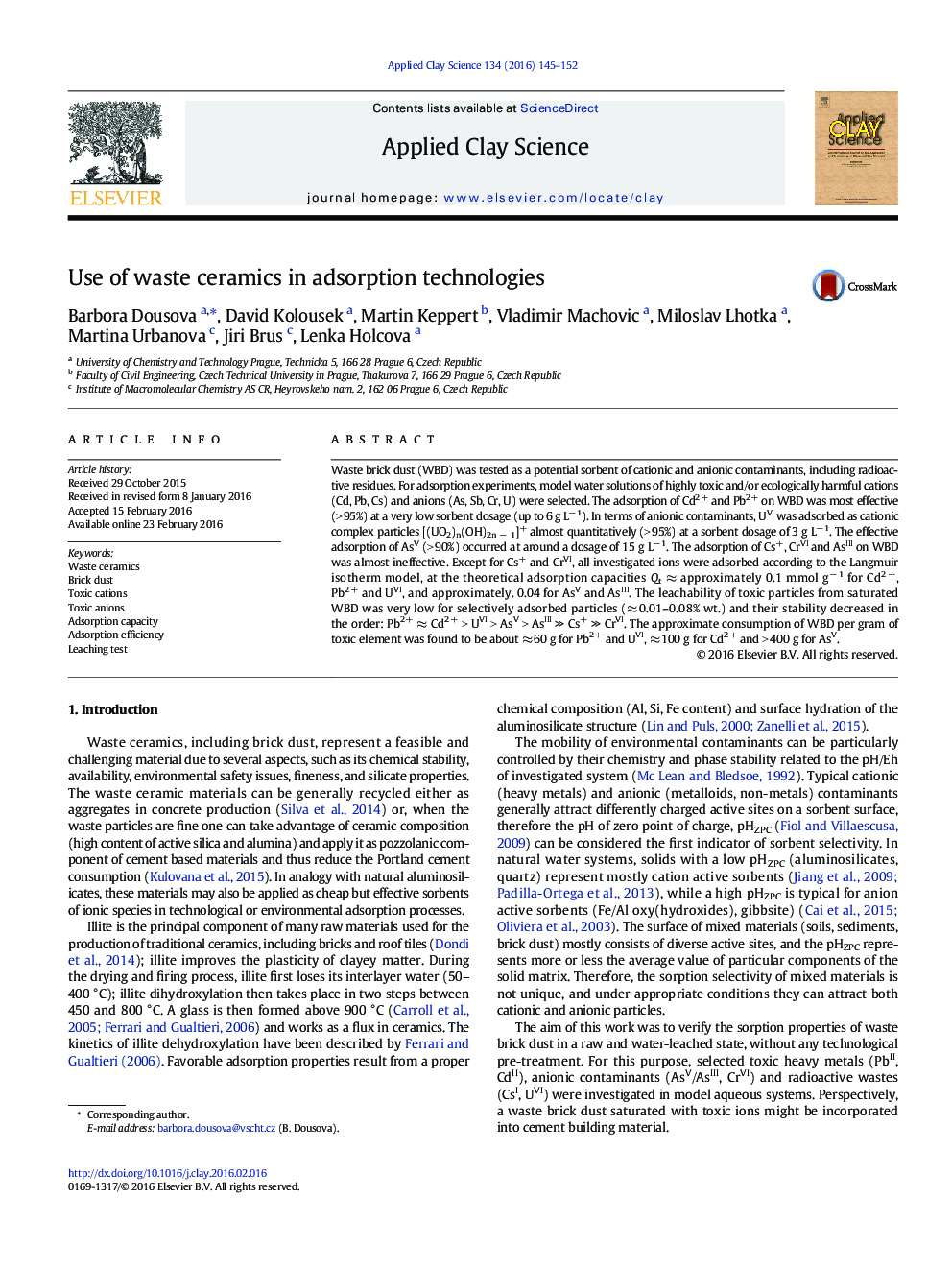| کد مقاله | کد نشریه | سال انتشار | مقاله انگلیسی | نسخه تمام متن |
|---|---|---|---|---|
| 5469131 | 1398988 | 2016 | 8 صفحه PDF | دانلود رایگان |
- Waste ceramics was found as perspective sorbent of toxic contaminants.
- The adsorption of toxic ions by waste ceramics may be applicable in decontamination technologies.
- Waste ceramics belongs to low-cost and environmentally friendly materials.
- Waste ceramics saturated with toxic ions may be incorporated into a building material.
Waste brick dust (WBD) was tested as a potential sorbent of cationic and anionic contaminants, including radioactive residues. For adsorption experiments, model water solutions of highly toxic and/or ecologically harmful cations (Cd, Pb, Cs) and anions (As, Sb, Cr, U) were selected. The adsorption of Cd2 + and Pb2 + on WBD was most effective (> 95%) at a very low sorbent dosage (up to 6 g Lâ 1). In terms of anionic contaminants, UVI was adsorbed as cationic complex particles [(UO2)n(OH)2n â 1]+ almost quantitatively (> 95%) at a sorbent dosage of 3 g Lâ 1. The effective adsorption of AsV (> 90%) occurred at around a dosage of 15 g Lâ 1. The adsorption of Cs+, CrVI and AsIII on WBD was almost ineffective. Except for Cs+ and CrVI, all investigated ions were adsorbed according to the Langmuir isotherm model, at the theoretical adsorption capacities Qt â approximately 0.1 mmol gâ 1 for Cd2 +, Pb2 + and UVI, and approximately. 0.04 for AsV and AsIII. The leachability of toxic particles from saturated WBD was very low for selectively adsorbed particles (â 0.01-0.08% wt.) and their stability decreased in the order: Pb2 + â Cd2 + > UVI > AsV > AsIII â«Â Cs+ â«Â CrVI. The approximate consumption of WBD per gram of toxic element was found to be about â 60 g for Pb2 + and UVI, â 100 g for Cd2 + and > 400 g for AsV.
Journal: Applied Clay Science - Volume 134, Part 2, December 2016, Pages 145-152
